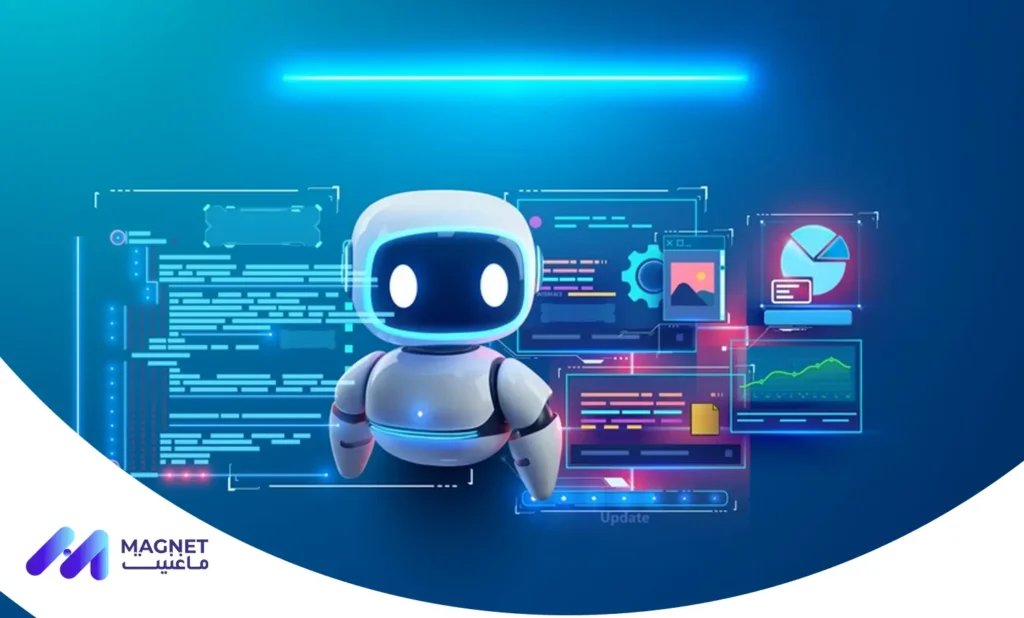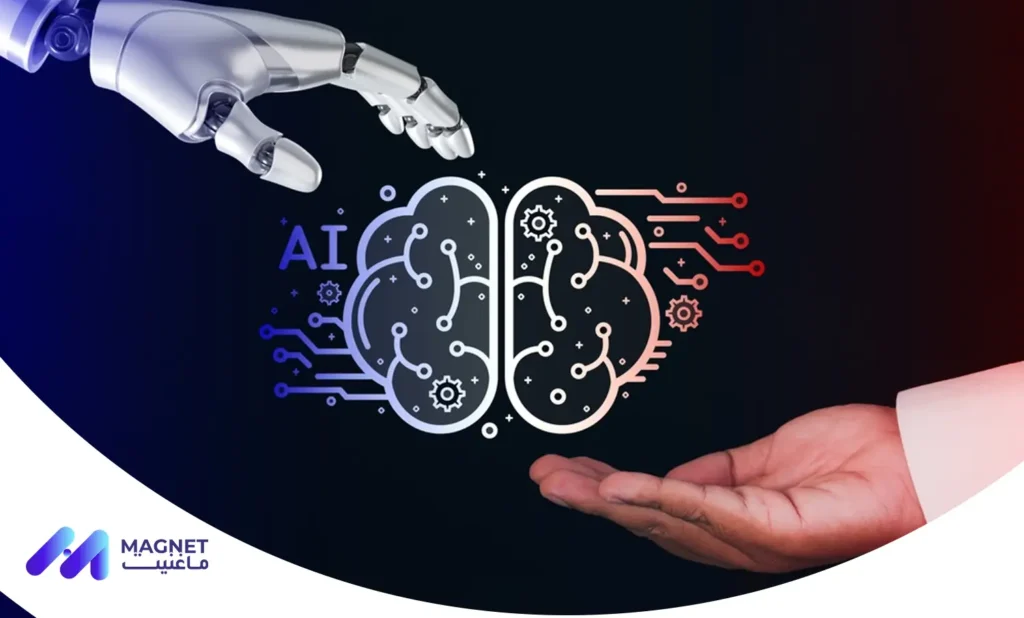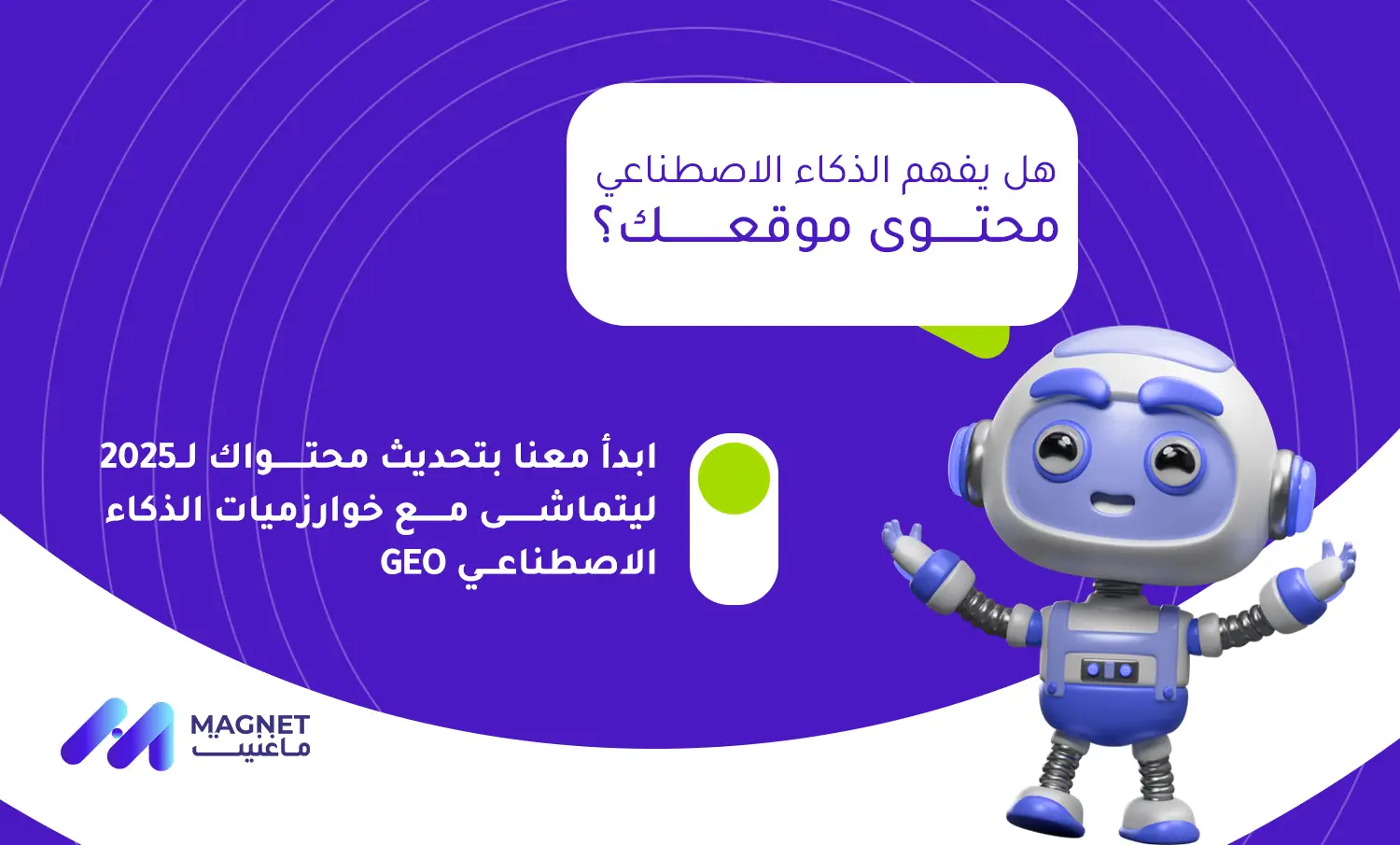The digital marketing landscape is evolving. New technologies are reshaping traditional strategies, particularly in the realm of search engine optimization (SEO).
One such innovation is generative engine optimization (GEO). This emerging field leverages artificial intelligence (AI) to revolutionize content optimization for search engines.
But what exactly is GEO?
In simple terms, it’s the application of generative AI models to SEO. These models can create SEO-friendly content at scale, understanding search intent and user behavior through machine learning algorithms.
The result?
A more efficient, data-driven approach to SEO. One that can potentially improve your website’s search engine rankings and online visibility.
But GEO is more than just a tool for boosting rankings. It’s a strategic approach that integrates with your overall digital marketing plan. It can enhance user experience, personalize content, and even help identify and target niche audiences effectively.
However, like any technology, GEO comes with its own set of challenges. Ethical considerations, potential biases in AI-generated content, and maintaining the balance between human creativity and AI efficiency are all part of the equation.
This article aims to demystify GEO. We’ll delve into its mechanics, compare it with traditional SEO, and explore its real-world applications. We’ll also discuss how to integrate GEO into your existing digital marketing strategy and address the challenges it presents.
Whether you’re a digital marketing professional, an SEO specialist, a content creator, or a business owner, this comprehensive guide will equip you with actionable insights into GEO.
So, are you ready to dive into the world of generative engine optimization? Let’s get started.

Understanding Generative Engine Optimization (GEO)
Generative Engine Optimization is a game-changer in digital marketing. It combines AI with SEO, forging a path to smarter content strategies.
At its core, GEO uses AI algorithms to analyze user data. This allows it to predict search behaviors, giving you a competitive edge.
Why does this matter? Understanding search intent is crucial. With GEO, you can tailor content to meet user needs, enhancing engagement.
GEO offers several benefits. It automates repetitive tasks, freeing up time for strategic planning. This leads to more efficient marketing efforts.
The integration of GEO into your strategies can significantly boost results. Here’s what makes GEO stand out:
- Efficient Content Creation: Automates the creation process, maintaining quality and consistency.
- Improved User Insights: Provides deeper understanding of user behavior and preferences.
- Enhanced Personalization: Tailors content to specific audiences, improving relevancy.
- Scalability: Easily adapts to growing content demands without compromising quality.
- Data-Driven Decisions: Utilizes analytics to guide strategy adjustments.
Implementing GEO can transform how content performs. It aligns marketing goals with evolving search engine algorithms.
However, it’s important to remain agile. The digital landscape is dynamic. Keeping up with the latest trends and updates is vital.
In essence, GEO is not just a tool. It’s an approach that reshapes the marketing landscape by leveraging AI’s power for optimization.

The Evolution of SEO and the Rise of AI
Search Engine Optimization has come a long way. Initially, SEO focused on keyword stuffing and backlinks. This primitive form of SEO no longer suffices.
As technology advanced, search engines became more sophisticated. Algorithms now prioritize user experience, content quality, and relevance.
Enter Artificial Intelligence. AI brought a seismic shift in how search engines function. Algorithms now analyze vast amounts of data swiftly.
AI’s ability to predict trends and understand user intent was revolutionary. It reshaped how we approached optimization strategies.
Generative AI takes this transformation further. It automates content creation and boosts search rankings, heralding a new era of SEO.
Defining GEO: The Intersection of AI and SEO
Generative Engine Optimization represents a harmonious blend of AI and SEO. It takes content optimization to the next level.
GEO leverages AI’s analytical prowess. It uses data to enhance keyword relevance and boosts content positioning on search engines.
How does it function? By generating SEO-friendly content automatically. This task requires understanding intricate algorithms and user intent.
GEO isn’t just about automation. It’s about creating adaptive, user-centric content. This makes browsing experiences more tailored and engaging.
In conclusion, GEO is a paradigm shift. It transforms AI’s capabilities into actionable SEO strategies, setting the stage for innovative digital marketing.

The Mechanics of GEO: How AI Transforms Content Optimization
Generative Engine Optimization hinges on advanced algorithms. These algorithms analyze vast data to optimize content effectively.
The process starts with data collection. AI scours user data, search patterns, and engagement metrics. This forms the backbone of GEO.
How does AI utilize this data? It predicts what users seek, tailoring content to fit these expectations. A crucial step is modeling user behavior.
Understanding audience preferences is key. AI achieves this by segmenting audiences based on behaviors and interests. The output is highly relevant content.
AI not only analyzes but also generates content. It crafts text optimized for keywords, readability, and engagement.
Here are core functions GEO performs:
- Keyword Analysis: AI identifies high-impact keywords.
- Content Generation: Auto-creates articles, blogs, and social content.
- Performance Tracking: Monitors and adjusts strategies based on real-time analytics.
- Content Scheduling: Optimizes when content should be published.
- Competitor Analysis: Evaluates competitor strategies to remain competitive.
Machine learning plays a critical role. It refines content continuously, learning from interactions and feedback.
The adaptability of GEO is unmatched. By understanding evolving trends, it adjusts strategies to maximize visibility.
Combining GEO with traditional SEO strategy accelerates growth. It’s not merely about content creation; it’s about creating the right content consistently.
Machine Learning and Search Intent
Machine learning is pivotal in GEO. It deciphers complex data, providing insights into user search intent.
Search intent represents the “why” behind a query. Grasping this is essential for crafting effective content.
Machine learning analyzes millions of queries. It identifies patterns and behaviors, categorizing them into distinct types of intent.
This categorization is critical. It differentiates between informative, navigational, transactional, and commercial intents.
AI uses this understanding to optimize content. For example, content for informative intent focuses on providing clear, concise answers.
Machine learning continuously improves. As data accumulates, it refines models, improving accuracy in predicting intent.
Another benefit is personalization. Machine learning tailors content recommendations to user preferences, enhancing engagement.
Ultimately, machine learning in GEO transforms data into actionable insights. It informs decisions, making them smarter and more efficient.
Natural Language Processing (NLP) and Content Relevance
Natural Language Processing is a cornerstone of GEO. It ensures content relevance and enhances user experience.
NLP enables machines to understand human language intricacies. It interprets context, sentiment, and semantics in content.
A central task of NLP is keyword optimization. Keywords must naturally integrate within content to avoid manipulation.
NLP also analyzes content tone and style. It ensures consistency in brand messaging, vital for maintaining brand identity.
Another critical aspect is semantic search. NLP links related terms and phrases, enhancing content discoverability.
This leads to improved search rankings. Search engines favor content that comprehensively addresses topics.
NLP also aids in content diversification. It suggests variations and new angles to explore, keeping content fresh.
In summary, NLP in GEO is about understanding and relevance. It fine-tunes content, aligning it with user intent and search algorithms.

Traditional SEO vs. Generative Engine Optimization: A Comparative Analysis
SEO, as we know it, has evolved substantially. Traditional SEO focused heavily on keyword density and backlinks. These methods have been effective but are now being enhanced by AI.
Generative Engine Optimization goes beyond these basics. It integrates machine learning and natural language processing, advancing SEO practices.
Traditional SEO often relies on manual analysis. It requires time-consuming keyword research and content adjustments.
GEO, however, automates these processes. AI quickly identifies keyword opportunities and adjusts content in real-time.
Moreover, traditional SEO depends on historical data. Changes in search engine algorithms can easily disrupt strategies.
In contrast, GEO’s adaptability is its strength. It continuously learns from fresh data, making it resilient to algorithm changes.
Here are some notable comparisons:
- Manual Efforts vs. Automation: Traditional SEO relies on human input; GEO automates analysis and execution.
- Static vs. Dynamic Content: Traditional methods often result in static content; GEO creates dynamic, tailored content.
- Historical vs. Real-Time Data: Traditional focuses on past performance; GEO adapts to real-time trends and updates.
- Incremental vs. Exponential Growth: Traditional methods yield slow growth; GEO can provide rapid, scalable results.
- Volume vs. Quality: Traditional approaches emphasize content volume; GEO prioritizes quality and relevance.
GEO offers an advanced approach to SEO. It harnesses AI’s power to predict search trends and user behavior. It transforms content optimization into a proactive, rather than reactive, practice.
Key Differences and Advantages of GEO
Generative Engine Optimization differentiates itself from traditional SEO through its core reliance on AI.
The ability to process large data sets is a notable advantage. AI analyzes broader trends faster, offering a competitive edge.
Another distinction is personalization. GEO tailors content to individual users, enhancing user engagement.
Traditional SEO aims for keywords, often neglecting user experience. GEO bridges this gap, optimizing for humans first.
Time efficiency is another GEO benefit. Automated processes reduce the workload for SEO professionals and allow focus on strategy.
SEO evolves rapidly, making adaptability crucial. GEO’s dynamic nature provides resilience against abrupt changes.
Additionally, the quality of insights from GEO leads to more accurate predictions. This precision helps in crafting effective SEO strategies.
Overall, GEO’s AI-driven approach offers several advantages. It merges efficiency, accuracy, and adaptability, setting it apart from traditional methods.
Integrating GEO into Your Existing SEO Strategy
Transitioning to GEO need not be daunting. Start by assessing current strategies and identifying areas for improvement.
Evaluate how AI can automate routine tasks. Implement AI tools for keyword research and content analysis to save time.
Ensure your content remains user-focused. GEO’s insights can help maintain alignment with user needs and interests.
Incrementally introduce AI-driven content generation. Begin with small-scale projects to observe impacts and refine methods.
Monitor results closely. Use GEO to track performance metrics, adjusting tactics as required.
It’s also important to educate the team. Understanding new technologies and processes is vital for a smooth transition.
Continuously update your strategies. Keep up with AI advancements to leverage new features and capabilities as they emerge.
Integrating GEO enhances an existing strategy significantly. It supports growth by combining robust insights with efficient execution.
By embracing AI, businesses can achieve improved results and increased competitiveness in the SEO landscape.

Real-World Applications: Success Stories and Case Studies
Generative Engine Optimization is making waves in digital marketing. Numerous businesses are experiencing unprecedented growth due to GEO.
One key factor is its ability to predict consumer trends. AI’s analysis helps companies stay ahead in competitive markets.
Additionally, businesses benefit from tailored strategies. GEO allows for customization, addressing unique industry needs effectively.
The impact of GEO is notable in content marketing. AI generates relevant, engaging material that resonates with target audiences.
Moreover, companies report increased efficiency. Automating routine SEO tasks frees resources for strategic development.
There are also significant cost benefits. GEO’s automation reduces the need for extensive manual labor in SEO processes.
Overall, GEO’s influence extends across various sectors, showcasing its versatility and effectiveness in diverse settings.
Businesses Thriving with GEO
Numerous companies have embraced GEO, with impressive results. E-commerce brands, in particular, see significant improvements in customer engagement.
For example, a leading retailer leveraged GEO for personalized recommendations. This resulted in higher conversion rates and customer loyalty.
In another case, a tech startup used GEO to optimize content for niche keywords. This strategy expanded its reach and increased web traffic remarkably.
Also, a media company used GEO to generate dynamic content, enhancing audience interaction. Their engagement metrics soared as a result.
These examples demonstrate GEO’s potential. Businesses that integrate GEO effectively realize increased growth and enhanced market positioning.
Measurable Improvements in Search Rankings and Traffic
GEO offers clear advantages in search rankings. Its AI capabilities provide comprehensive optimization insights.
A digital agency reported impressive gains in search visibility, utilizing GEO to refine content strategy.
Further success was observed in local SEO. A chain restaurant used GEO to enhance local search performance, boosting foot traffic.
One key benefit is GEO’s agility. It adapts to algorithm updates, maintaining search performance consistently.
Moreover, GEO improves content relevance. This contributes to reduced bounce rates and longer site visits.
Businesses that utilize GEO report notable increases in organic traffic. This leads to sustained improvements in search engine rankings.
Such measurable gains highlight GEO’s significance. For companies seeking to elevate digital presence, GEO is an invaluable tool.

Leveraging GEO for Enhanced Digital Marketing
Generative Engine Optimization is revolutionizing digital marketing strategies. Its integration offers unprecedented capabilities for content optimization and user engagement.
One of GEO’s standout features is its ability to produce large volumes of content rapidly. This helps businesses maintain fresh and relevant online presence.
AI-driven content creation is transforming the landscape. With GEO, producing high-quality material at scale is achievable.
Moreover, GEO provides personalized content. It tailors messages to individual preferences, enhancing user experience significantly.
The following are key advantages of implementing GEO in digital marketing:
- Efficiency: Automates repetitive tasks, freeing up creative resources.
- Scalability: Handles increased demand without compromising quality.
- Precision: Targets content based on data-driven insights.
- Adaptability: Responds to changing trends swiftly.
- Engagement: Fosters improved customer interaction and loyalty.
Leveraging GEO requires a strategic approach. Businesses need to align their objectives with AI capabilities for optimal outcomes.
Balancing AI efficiency with human creativity is crucial. While GEO can generate vast content, human insight ensures relevance and authenticity.
Furthermore, monitoring AI performance is vital. Regular analysis helps refine strategies, enhancing overall effectiveness.
GEO’s role in digital marketing is continually expanding. Businesses embracing it stand to gain a competitive edge.
Content Creation at Scale with AI
The challenge of producing scalable content is common in digital marketing. GEO, empowered by AI, addresses this challenge adeptly.
AI’s role in content generation involves not just quantity but also quality. GEO algorithms analyze trends and preferences to tailor relevant content.
Unlike manual methods, AI operates with speed. It can produce multiple content variants in reduced timeframes, enhancing productivity.
Moreover, GEO aids in diverse content creation. From blogs to multimedia formats, AI can cover various content types, broadening reach.
However, AI’s content requires oversight. Ensuring quality and brand consistency remains a crucial human task.
Collaboration between AI and content teams is essential. Human reviewers refine AI-generated ideas, aligning them with brand messaging.
Additionally, AI’s scalability supports marketing campaigns. Businesses can respond rapidly to consumer demand with tailored content strategies.
The potential of GEO in content scaling is immense. It allows businesses to maintain a robust online presence without exorbitant resource investment.
Ultimately, GEO serves as a powerful ally in digital content creation. Businesses utilizing AI for scale will likely see enhanced market presence.
Personalization and User Experience
In digital marketing, personalized user experience is paramount. GEO enhances personalization with its data-driven insights.
AI-powered GEO tools analyze user behavior, delivering content that resonates with individual needs. This deepens customer engagement.
Moreover, personalized content helps build stronger brand connections. Customers are more likely to engage with material tailored to their interests.
GEO’s personalization isn’t limited to text. AI tailors multimedia elements like images and videos for a cohesive user experience.
Leveraging AI for personalization also improves customer journey mapping. Understanding search intent helps in curating content that aligns with user goals.
Furthermore, GEO’s adaptability allows for real-time personalization. AI continually adjusts based on user interaction patterns, offering dynamic experiences.
However, ethical considerations are critical. Transparency in how personal data influences content is necessary to maintain trust.
Including user feedback is beneficial. GEO strategies can be refined through insights gathered from customer interactions.
The future of digital marketing lies in seamless integration of personalization. GEO offers tools that transform user experiences meaningfully.
Through GEO, businesses can meet consumer needs with precision. Personalized marketing efforts promise higher conversion rates and brand loyalty.

Overcoming Challenges and Ethical Considerations in GEO
Generative Engine Optimization offers transformative potential, yet challenges exist. Ethical considerations in AI deployment are crucial.
AI algorithms can inadvertently introduce biases. Ensuring fairness in content generated by GEO demands vigilance.
Bias may arise from skewed data sets. This can lead to misrepresentation or exclusion of certain groups.
Therefore, maintaining content quality must be a priority. Quality content remains the backbone of effective digital marketing strategies.
Implementing GEO requires addressing these challenges strategically. Businesses should establish clear guidelines for AI use.
Regular audits of AI-generated content can help identify biases early. This allows for timely corrections and ensures inclusivity.
Here are a few challenges and considerations in GEO:
- Bias Detection: Continually monitor for unintended skew in AI outputs.
- Data Integrity: Use comprehensive, diverse data sets to train AI models.
- Content Oversight: Incorporate human review for accuracy and context.
- Transparency: Communicate AI’s role in content generation openly.
- Ethics Training: Equip teams with knowledge on AI ethics and bias mitigation.
Navigating GEO’s challenges requires a balanced approach. Businesses must harness AI’s power responsibly.
Incorporating diverse perspectives in data analysis is beneficial. A multi-dimensional approach reduces the risk of biased outputs.
Ultimately, ethical GEO enhances credibility. Transparent practices build trust among audiences and strengthen brand reputation.
Addressing Potential Biases and Maintaining Content Quality
Potential biases pose significant risks in GEO. AI systems can unintentionally perpetuate stereotypes, impacting content integrity.
Tackling these biases requires proactive measures. Ensuring data diversity is foundational in developing unbiased AI models.
Additionally, continuous algorithm testing is essential. Evaluating AI outputs for fairness helps maintain content objectivity.
Content quality also hinges on human oversight. Human intervention is necessary to ensure AI outputs meet brand standards.
Regular quality checks foster content excellence. By combining AI efficiency with human insight, businesses achieve optimal results.
Best Practices for Ethical GEO Implementation
Implementing GEO ethically involves strategic planning. Establishing comprehensive policies guides ethical AI use.
Engaging in ongoing education around AI ethics fosters awareness. Awareness among teams reduces the risk of unethical practices.
To cultivate transparency, businesses should disclose AI’s involvement. Openness about AI integration nurtures consumer trust.
Incorporating user feedback is vital. Listening to customer input refines AI strategies, ensuring content resonates with target audiences.
Moreover, ethical GEO requires interdisciplinary collaboration. Bringing together diverse expertise enhances AI’s ethical deployment.
Finally, aligning GEO with core values ensures consistency. Ethical alignment strengthens the overall integrity of digital marketing efforts.

The Future of SEO: Predictions and Trends in Generative AI
Generative AI is poised to revolutionize SEO. As technology evolves, SEO practices must adapt to stay competitive.
One major trend is AI’s growing role in content creation. Automated systems increasingly produce SEO-friendly content at scale.
AI’s ability to generate personalized experiences will shape user engagement. Customized content will become a standard expectation.
GEO will influence search engine algorithms. Search engines will evolve to better understand AI-driven content.
Predictions for the future include:
- Enhanced Personalization: Content tailored to specific user needs and behaviors.
- Real-time Adaptation: SEO strategies that adjust instantly based on data insights.
- Voice Search Optimization: Increased focus on optimizing for voice commands.
- Visual and AR Integration: Incorporating augmented reality into search experiences.
- Cross-platform Consistency: Unified messaging across various digital channels.
These trends illustrate the potential of AI in redefining SEO landscapes. Innovation in generative AI will set new benchmarks.
Businesses must align themselves with these changes. Only by embracing AI can they maintain or gain competitive advantage.
Staying Ahead of Algorithm Changes with GEO
Search engine algorithms are ever-evolving. Staying ahead of changes is key to a successful SEO strategy.
GEO offers tools to anticipate algorithm updates. By analyzing patterns, GEO can provide insights into future changes.
Adapting quickly to algorithm adjustments prevents potential disruptions. Proactivity in SEO ensures consistent search engine visibility.
The role of AI in tracking SEO metrics will increase. It can predict how changes might impact rankings and offer solutions.
Regularly updating content strategies is crucial. Continuous learning and adaptation will keep SEO efforts aligned with best practices.
Incorporating feedback from search trends assists in refining GEO strategies. This keeps content relevant and optimized.
Preparing for the Next Wave of AI in Digital Marketing
AI’s role in digital marketing is expanding rapidly. Preparing for its next wave involves embracing automation tools.
Integrating AI-driven analytics enables data-informed decisions. This facilitates more precise targeting and effective marketing strategies.
Content marketers must focus on creating more engaging material. AI offers insights into what resonates with audiences.
Businesses should invest in AI training. Teams skilled in AI technologies will better leverage emerging trends.
Additionally, collaboration with tech experts can enhance AI integrations. Their insights ensure that digital marketing aligns with technological advancements.
Leveraging AI requires adapting organizational culture. Openness to innovation supports the seamless integration of new tools.
Digital marketing must evolve with AI advancements. Embracing these changes will position businesses for future success.
Conclusion: Embracing GEO for Competitive Advantage
Generative engine optimization represents a groundbreaking shift in digital marketing. It holds immense potential for those who harness its capabilities.
As AI technologies advance, integrating GEO into your strategy can secure a competitive edge. By embracing these innovations, businesses can optimize online visibility and engagement.
The future of SEO lies in the thoughtful application of AI tools. Those who adapt and evolve with GEO will thrive in the digital landscape. Embracing this forward-thinking approach ensures lasting success and growth in an ever-changing market.
Frequently Asked Questions About GEO
Generative engine optimization (GEO) is a modern approach to content creation. It uses AI to enhance SEO and digital marketing.
What is generative engine optimization (GEO)?
GEO uses AI and machine learning for advanced content optimization, improving SEO results significantly.
How does GEO differ from traditional SEO?
Traditional SEO focuses on keywords, while GEO uses AI for predictive insights and sophisticated content strategies.
Can GEO improve my website’s search engine rankings?
Yes, implementing GEO can enhance your site’s ranking by refining content relevance and engagement.
Is GEO compatible with current digital marketing strategies?
GEO integrates well with existing strategies, adding AI-driven insights for optimized digital marketing efforts.
What are the ethical considerations of using GEO?
Ethical GEO use involves transparency in AI content creation and maintaining content quality standards.








